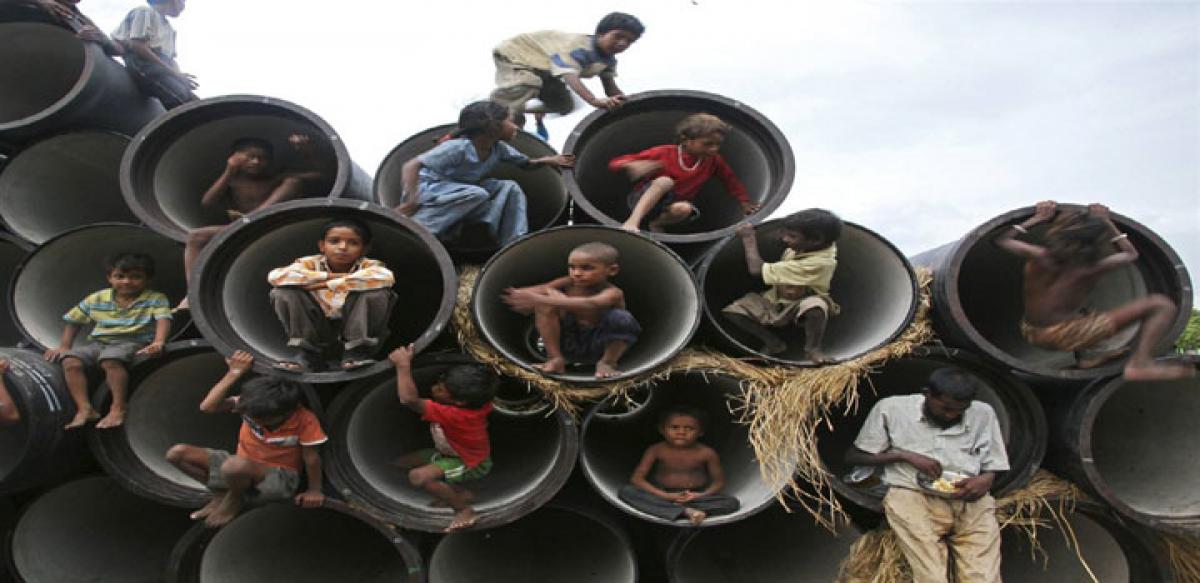Live
- Exhilarating ‘Benchmark’ of Venkat Changavalli
- Development activities worth `30 cr launched in Puthalapattu constituency
- Allegations against KTR baseless: BRS leader
- Megastar Chiranjeevi to Visit Allu Arjun’s Residence at 12 PM Today
- Nilima Rane: Trailblazer in Nursing
- Casual yet stylish office outfits for all-day comfort
- TTD to suspend all special darshans from January 10 to 19 amid Vaikuntha dwara darshans
- Naidu pats TDP leaders, cadres for enrolling 73L members
- Rupali Ganguly says for 20 years she never got an award
- Advanced anti-drone systems deployed for devotees’ safety at Mahakumbh
Just In

India continues to struggle in the Human Development Index (HDI) in the latest United Nations Development Programme (UNDP) report, ranking 130 out of 188 countries. This year’s rank is five spots higher than the UNDP report from 2014, but still the lowest among BRICS nations.
80% of Indian women unbanked
.jpg)
India continues to struggle in the Human Development Index (HDI) in the latest United Nations Development Programme (UNDP) report, ranking 130 out of 188 countries. This year’s rank is five spots higher than the UNDP report from 2014, but still the lowest among BRICS nations.
India's HDI value for 2014 is 0.609, which puts the country in the medium human development category, positioning it at 130 out of 188 countries and territories. Between 1980 and 2014, India's HDI value increased from 0.362 to 0.609, an increase of 68.1 per cent or an average annual increase of about 1.54 per cent. Among the BRICS nations, India was ranked lowest.
The HDI is an average measure of basic human development achievements in a country. It is a summary measure for assessing long-term progress in three basic dimensions of human development -- a long and healthy life, access to knowledge and a decent standard of living.
Life expectancy at birth increased to 68 years in 2014 from 67.6 in the previous year and 53.9 in 1980. Gross National Income (GNI) per capita was USD 5,497 in 2014 up from USD 5,180 in 2013 and USD 1,255 in 1980. India's GNI per capita increased by about 338 per cent between 1980 and 2014. However as per the report, the expected years of schooling is stagnant at 11.7 since 2011. Also, mean years of schooling at 5.4 has not changed since 2010.
Between 1980 and 2014, India's life expectancy at birth increased by 14.1 years, mean years of schooling increased by 3.5 years and expected years of schooling increased by 5.3 years.
The Human Development Report for 2015, United Nations Development Programme (UNDP), paints a disturbing picture of gender inequality in Indian society. It states that 42 per cent of the world's women were found to have not had access to bank accounts in 2014.India was among those countries in which more than 80 per cent of the women didn't have access to bank accounts in 2014. By contrast, in Japan and the Republic of Korea more than 90 per cent of women have bank accounts.
This inequality is not restricted to just access to bank account. The percentage of India's women using internet was also dismal compared to the percentage of men with access to the internet. The report states that in 2013, only 39 per cent of Indian women were using the internet, whereas, 61 percent of men were found to be internet users.
The report provides data from other countries to help us compare internet usage by the two sexes. "In China the percentage was 44 per cent for women and 56 perc ent for men, and in Turkey only 44 per cent of women were, compared with 64 per cent of men."

© 2024 Hyderabad Media House Limited/The Hans India. All rights reserved. Powered by hocalwire.com







